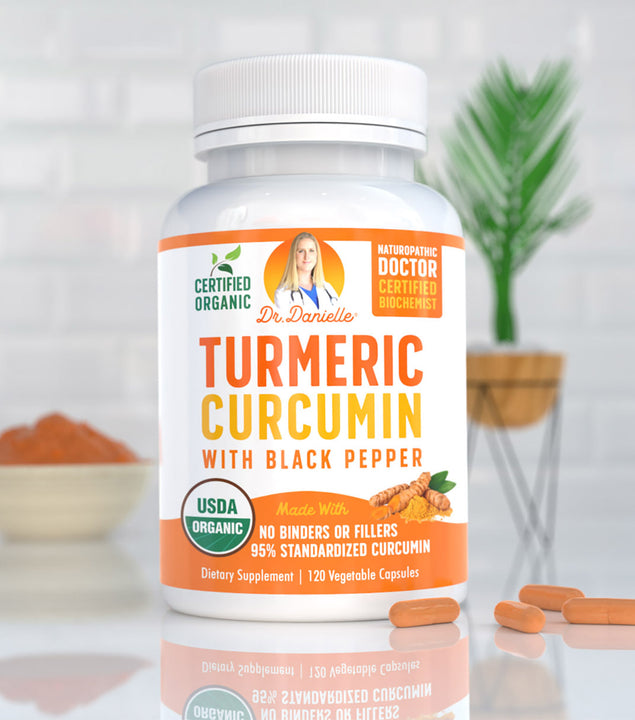Who doesn’t love a bowl of delicious beef stir fry for lunch and a sizzling steak for dinner? But did you know that with every piece of red or processed meat you put in your stomach, you are increasing your risk of encountering cancer?
Did you know the World Health Organization (WHO) has classified ham, frankfurts, salami, bacon, and many other types of processed meat, that most of us consume on a daily basis, as Group 1 carcinogens? This means that there is strong evidence that proves that these meats can trigger cancer in users.
But how can something that we so commonly consume in life can be associated with such a serious disease? This article will help you find out.
Types Of Meat Associated With Cancer
There are two main types of meat-related to the risk of cancer i.e. red meat and processed meat.
Red meat
Some common examples of red meat that are specifically discussed in relation to cancer include lamb, beef, mutton, pork, goat, veal, and venison. Other meats like fresh fish, turkey, and chicken are not included in it.
Processed meat
Any type of meat that has gone through any transformative procedure such as curing, smoking, salting, fermentation, etc. for enhancing flavor or preserving it for long is known as processed meat. Some common examples include a hot dog, corned beef, jerky, ham, etc. All meat-based sauces and canned meat are also included in the processed meat category as they may be cured by adding nitrite, salt, ascorbic acid, glutamate, etc.
The Connection Between Red/Processed Meat And Cancer

To understand the connection between cancer and red and processed meat consumption, two chemicals are to be blamed i.e. polycyclic aromatic hydrocarbons (PAHs) and heterocyclic amines (HCAs).
Both HCAs and PAHs are chemicals produced in muscle meat when it is cooked using a method that includes exposing the meat to high temperatures. For example, methods like direct grilling over an open flame or pan-frying can trigger the production of HCAs and PAHs in any meat, including fish, pork, beef, etc. Multiple lab experiments have proven HCAs and PAHs as mutagens which means that they are capable of altering your DNA and inducing cancer.
HCAs are produced when sugars, amino acids, and creatinine or creatine react together at high temperatures. On the other hand, PAHs are formed when the juices and fat in the meat being grilled over open flame drip onto the fire, causing smoke and flames. The smoke that rises in this case is flooded with PAHs that come in contact with the meat and stick to its surface. (1)
Factors Responsible For HCA And PAH Formation In Meat
The formation of PAHs and HCAs in meat depends on various factors, such as the choice of cooking method, the type of meat, and the level of doneness (rare, medium, well done, etc.). In general, whatever type of meat you choose to cook at high temperatures or a medium temperature for a long time tends to have more HCAs in it. For instance, a barbecued, grilled, or well-done chicken will have more HCAs. Alternatively, any cooking method which directly exposes the meat to smoke leads to the formation of PAH. (2)
We should also note that both PAHs and HCAs can damage the DNA only after getting metabolized by specific enzymes in the body. This process, known as bioactivation, may differ in different people, depending on the activity of these enzymes. Therefore, the risk of developing cancer via meat consumption can also vary accordingly. (3)
Exploring the Evidence
Multiple studies have shown that exposing your body to PAHs and HCAs can increase the risk of cancer in animal models. In multiple settings, rodents that consumed a diet supplemented with HCAs have been found to develop tumors of the breast and liver among other organs. (4,5).
On the other hand, rodents that consumed PAH as a part of their diet also developed cancers, especially in their lungs and gastrointestinal tracts. (6) However, it must be noted that both PAHs and HCAs were used in very high doses in these studies which is not possible for a human to consume in their daily diet.
Population studies have not been able to establish a definitive connection between the exposure to PAH and HCA from cooked meat and cancer risk in humans. This is due to certain difficulties that may arise while conducting such studies. For example, one difficulty is to exactly determine the accurate level of exposure to PAHs or HCAs that a person gets by consuming cooked meats. Dietary questionnaires might be able to provide some good estimates; however, they often fail to collect all information about the cooking techniques which is necessary to calculate the exposure to primary offenders.
Additionally, as mentioned above, the enzyme activity needed to activate HCAs and PAHs can vary, even in users who consume the same amount of these compounds. Moreover, it is also possible to get PAH exposure from other sources in addition to meat, which can alter the study results.
Epidemiologic studies have been attempting to examine the cooking methods and meat consumption in various populations using detailed questionnaires. In these studies, researchers found that consuming fried, well-done, and barbequed meat in high quantities has been associated with an increased risk of pancreatic and colorectal cancer. (7)
In 2015, the International Agency for Research on Cancer (IARC) recruited a panel of experts to explore the data collected on the subject under discussion through epidemiological research and mechanistic studies. The panel gave the verdict that red meat consumption can be a probable cause of cancer in humans and placed it in Group 2A. However, the panel failed to conclude whether PAHs and HCAs are associated with the incidence of cancer or not.
How To Reduce PAH And HCA Exposure Through Meat?
Unfortunately, there are no specific guidelines that you can follow to optimize your consumption of PAHs and HCAs. However, you can control your exposure to HCAs and PAHs by controlling the amount of meat you consume and using particular cooking methods.
Cooking Tips
Following the tips mentioned below can help you reduce your exposure to these dangerous chemicals: (8)
- Try not to directly expose meat to a hot metal surface or an open fire. Moreover, make sure you do not cook meat for a long time, especially at high temperatures. This can drastically reduce the production of PAHs and HCAs.
- Keep turning over meat while cooking it on high heat. Doing this repeatedly can significantly reduce the amount of HCAs formed in it as compared to leaving it on heat without flipping it very often.
- To reduce the time needed to cook the meat properly on high heat, microwave it first. This can drastically reduce the HCA formation.
- Avoid consuming any gravy made using meat drippings. Moreover, get rid of all charred portions of the meat before consuming it. This is because all charred areas indicate that the meat has been exposed to direct smoke in all these sites; hence, they are likely to be loaded with lots of PAHs. So, better remove them prior to consuming the meat to avoid getting unnecessary exposure of this dangerous chemical.
Dietary Tips
The following dietary tips must be kept in mind according to your age group.
Adults
Begin by tracking how much meat you consume on a daily basis. If this amount is around 90 grams or more, you need to cut back. The recommended daily intake of meat in adults is around 70 grams or less.
You can cut back on your daily meat consumption by eating smaller portions of processed and red meat and filling your plate with more veggies. You can also consider trying healthy alternatives.
If you still aren’t able to go below 90g of meat on certain days, consider eating less on the other days or go completely meat-free. For example, if you are having a barbecue party on weekend, make sure you do not eat any meat on Monday and Tuesday to balance out. In this way, your average daily intake of meat will fall to 70 grams.
Children
Children over the age of five years are encouraged to eat a healthy, balanced diet which can include meat among other sources of protein. However, remember that children do not need as much food as adults, and their specific dietary requirements vary with their size and age.
As far as infants and children under the age of 5 are concerned, it is better to seek advice from a doctor regarding the introduction of white and red meat along with other solid foods in their daily diet.
Concluding Remarks
Meat is an important source of protein and many include it as part of a healthy diet. However, using certain types of meat, red meat and processed meat in particular, in high quantities can also prove devastating for health. Both types of meat, especially when cooked at high temperatures can increase the incidence of cancer in humans. While there is sufficient data that proves this evidence, more research is still needed for further clarification. Till then, it is best if you take all precautionary measures in cooking and consuming both processed and red meat just to be on the safe side. There is also the option of a balanced plant-based diet.








